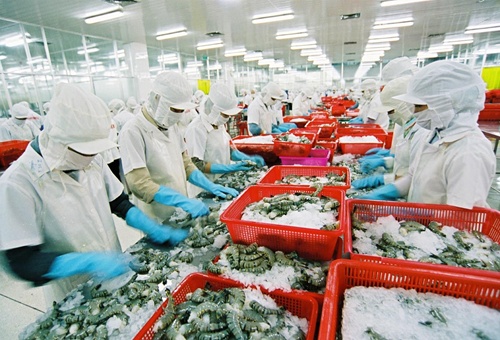Lanterns made in Vietnam’s imperial capital find foreign buyers
Lanterns made in Vietnam’s imperial capital find foreign buyers
The Vietnamese traditional lanterns made by artisans in the central city of Hue, which have long been favored by local consumers and international tourists, now light up homes and facilities in several other countries.
The bamboo-framed lanterns made of colorful silk used to be of great use to kings of the Nguyen Dynasties (1802 – 1945), the country's last monarchy reign, before ornamenting hotels, restaurants and traditional homes in Vietnam’s imperial capital.
After winning the hearts of consumers in other localities across Vietnam and international holidaymakers in Hue, these lanterns have made their way to Singapore, Thailand, Switzerland, Japan, and South Korea.
“We ship around 500 lanterns each time, but this modest export volume is a recognition of our efforts to create new styles of lanterns, as well as to increase quality and cut prices,” Nguyen Ngoc Man, who runs a lantern-making facility called Co Do in the city, said.
Co Do has sold around 2,000 Hue lanterns in the domestic market in the first six months of this year, Man added.
There are currently 15 different styles of Hue lanterns available at the facility, fetching VND100,000 to VND5 million (US$4.71-235) each, according to the owner.
Co Do is making more than 1,000 lanterns a month, and Man said the capacity is being upgraded to meet export demands.
The handicrafts also won the hearts of foreign tourists thanks to their eye-catching and diverse designs and colors, and especially their unique beauty, Lee Kang Shick, a South Korean customer, commented.
Although South Korea has its own traditional lanterns, holidaymakers from the East Asian country are still impressed by the Hue handicrafts, he added.
Lee suggested issuing booklets or catalogues featuring the Hue lanterns to have more holidaymakers learn of the unique products.
Hue lanterns are made of bamboo, pinewood and silk and these environmentally friendly materials “make the products acceptable to the European market,” lantern designer Nguyen Thi Thanh Tra remarked.
Tra, who earned an M.A. at Hue University of Arts, won second prize in a souvenir-design contest hosted by the city in May.
The designer remarked that Hue lanterns should become more attractive and durable to continue impressing international consumers.
“Every Hue lantern must feature a typical image of Vietnam; it will be a way to promote the country’s beauty to the world,” she said.
Vietnamese-made lanterns have an advantage over Chinese products in the EU market, because the latter are made from materials that are hard to recycle such as plastic and fabric, according to Tra.
“Such products are rarely accepted in the EU; this is Vietnam’s chance,” she pressed.
Dr. Tran Dinh Hang, from the Vietnam Sub-Institute of Culture and Arts in Hue, called on the government to support lantern-making facilities to improve the quality of their products and reduce their prices.
“Once Hue lanterns are of good quality and reasonably priced, they will take back the market share from Chinese products,” Hang said.
tuoitrenews



















